This is how we rolled
November 17, 2011
Remember the Santa Monica Air Line? How about the Los Angeles & Independence?
Probably not.
But the two historic railways will be there—and not just in spirit—when the Expo Light Rail Line begins rolling from Downtown westward in just a few months, with its first terminus at La Cienega Boulevard.
Although the Westside’s first mass rail project in 50 years feels in some ways like the dawn of an era, Los Angeles has been down this road before. In fact, it has been down the same set of train tracks: The Expo Line will run on a historic railroad right-of-way that has carried Southern Californians, off and on, for more than 135 years now, first behind steam engines and then in iconic Red Cars.
“We’re definitely going back to the future,” jokes John Smatlak, a rail transit consultant and volunteer rail historian at the Orange Empire Railway Museum in Perris. “Of course, it looked a lot different back then than it does today.”
“This was a route that started out in 1875 as a steam railroad built by a silver baron,” confirms Matthew Barrett, research librarian for the Metropolitan Transportation Authority, “and then later became part of the Pacific Electric Red Car line.”
Indeed, Barrett says, some images of the Air Line from the Metro archive are being embedded as station tiles along the Expo Line as reminder of the connection. (See gallery below.)
Constructed by John P. Jones, a U.S. senator who had made a fortune in Nevada, the Expo Line route was originally the Los Angeles & Independence Railroad, the linchpin of a grand plan. Jones owned a silver mine in Inyo County and coastal ranch land where Santa Monica now stands. He wanted to connect the two with Los Angeles and persuade the city to situate its port near his slice of the shoreline.
However, his powerful rival, Southern Pacific Railroad, wanted the port to be near its lines in San Pedro, and Jones had lost bargaining power; his silver mine was exhausted. “Jones built the link from Downtown to Santa Monica, and then he went bankrupt,” says Barrett, the Metro research librarian.
In 1877, Southern Pacific bought Jones’ struggling railroad and turned it into a local freight and passenger hauler. Its cars would steam from an ornate Victorian depot Downtown to a long wharf built out into the ocean, carrying tourists and cargo through the then-sparsely populated fields and plains that would become L.A.’s Westside.
Eventually, Southern Pacific leased the line to a subsidiary run by Henry E. Huntington, the real estate tycoon nephew of the president of the railroad. Huntington electrified it and added it to the rail system he was building to less developed land holdings outside L.A.’s city limits.
Painted a bright, marketable red, Huntington’s electric cars ran between Downtown L.A. and increasingly far-flung suburbs, including Santa Monica. By 1908, the old Los Angeles & Independence rails were bustling with the so-called Red Cars and the line, which also carried a lot of freight, had been renamed “The Air Line,” a common term back then for the shortest distance between two points. In 1911, when a number of railroads merged in Southern California, it officially became part of the Pacific Electric railway.
At the peak of their popularity in the Roaring Twenties, the Red Cars covered some 1,100 miles of railway from the San Gabriel Mountains to San Bernardino to the beaches of Orange County. They became an essential part of Los Angeles’ culture and lore.
The Red Cars showed up in movies. They were written into waltzes. The depots became famous in their own right. Whole communities sprang up as so-called “streetcar suburbs.”
In his history of growth in Los Angeles, “The Reluctant Metropolis”, William Fulton wrote that Huntington “built a $60 million fortune around the Pacific Electric in little more than a decade.” But, he added, Huntington saw the Red Cars mostly as a tool for real estate speculation and disregarded the fact that, with so many lines going through L.A., “it would often take a PE [Pacific Electric] Red Car longer to leave the downtown area than to make the entire run to Pasadena or Santa Monica.”
Still, says Barrett, the Red Cars mapped the urban footprint of Southern California more than any other early influence, including the automobile. “Many assume that the freeways created our sprawl,” he says, “but it was the railways built many years earlier that laid the foundation for it.”
Eventually, Barrett and other historians say, a combination of factors caused highways and cars to displace the Red Cars. And no, they say, it wasn’t just the kind of auto and tire industry maneuvering dramatized in “Who Framed Roger Rabbit?” (“That was the Yellow Cars, not the Red Cars,” says Barrett. “That movie has done more to create incorrect local history than anything I can think of.”)
Angelenos were also the earliest auto adapters outside Detroit. Voters distrusted the railroads. Real estate speculators realized they didn’t necessarily need to invest along rail lines. By the late 1930s, the Automobile Club of Southern California was calling for “a network of traffic routes for the exclusive use of motor vehicles”—i.e., freeways—while rail advocates were struggling to build a consensus. When gas rationing during World War II ratcheted up demand for rail, it revived profits but underscored the need for investment in rail infrastructure.
“People always omit the context of the time,” says Smatlak of the Orange Empire Railway Museum—a resting place for most of what’s left of Southern California’s stock of retired Red Cars. “Yes, there were tire and rubber and gas and oil companies involved in shifting transit to buses. But by the 1950s, the rail system was really worn out and they were faced with making a massive capital investment.”
Adds Barrett: “If we have anyone to blame, it’s ourselves—or our grandparents—for not being on the steps of City Hall, demanding our electric railway system be preserved in 1943 after the first smog alert was generated.”
The Air Line stopped carrying passengers in 1953. Eight years later, the last Red Car rumbled into retirement. And, with the exception of a decade or two, Angelenos have been waiting for relief ever since, stewing in their cars.
Clearing the air, one city at a time
November 17, 2011
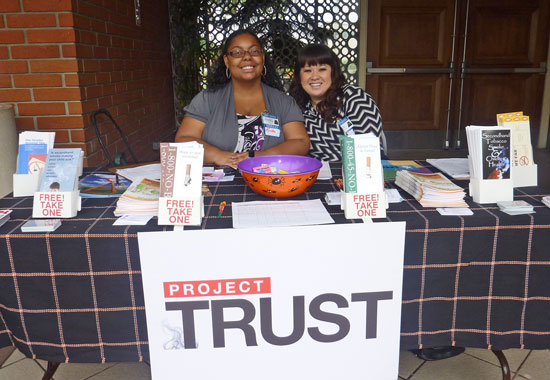
Public health workers Kristin McGuire, left, and Amber Tsujioka helped bring a new smoking ban to Compton.
Twenty-four years ago, when health advocates in Compton tried to restrict smoking, two City Council members defiantly lit cigarettes on the dais, then killed the plan before it could come to a vote.
We’ve come a long way, baby.
Last week, Compton passed a landmark ordinance to curb secondhand smoke in outdoor dining areas, parks, apartments and condos. Meanwhile, Hermosa Beach effectively outlawed outdoor smoking in virtually every part of the city where people gather.
On the other side of the 710 Freeway, the Downey City Council instructed staff to start drafting a law to restrict smoking in parks and other public places. This week, a tough, new, smoke-free housing measure was enacted in Baldwin Park.
The flurry of grassroots legislation—with more in the pipeline—isn’t accidental. For the past year and a half, the Los Angeles County Department of Public Health has been successfully leveraging a two-year, $16 million federal grant aimed at reducing smoking and exposure to secondhand smoke.
The initiative, known as Project TRUST and managed by the department’s Tobacco Control & Prevention Program, has been so successful that its efforts already have been extended under a new and broader Community Transformation Grant, underwritten by federal health care reform funding.
Although the Department of Public Health has long done educational campaigns to help communities discourage smoking, the federal money “has let us accelerate that work, and move into more challenging policy areas,” says Dr. Paul Simon, who heads the department’s Division of Chronic Disease and Injury Prevention. “We’re now getting into 10 or 15 cities a year.”
By law, the public health department cannot lobby, but it can educate the public, thus setting the stage for a community’s own advocacy. Under the grant, the county was able to hire six “community mobilization teams” and subcontract with nine community-based organizations to provide technical and educational support for local efforts to restrict smoking.
As the teams have fanned out in the past 18 months to do local polling, hand out literature and speak to community groups about tobacco, community activism has followed. Since the Project TRUST initiative hit the ground, local smoking ordinances have been revisited or broadened in Manhattan Beach, West Hollywood, Burbank, Los Angeles, South Pasadena, Santa Monica, Huntington Park, Torrance and Inglewood, as well as the aforementioned communities. Still other cities are in various stages of readying smoking ordinances for passage.
Particularly successful have been city-level efforts to cordon off no-smoking areas in apartment and condominium buildings, where secondhand smoke chronically plagues children and nonsmokers, particularly those with asthma. A recent policy brief from the UCLA Center for Health Policy Research found that nearly 1 million children in California are exposed to secondhand smoke every year.
Mandating smoke-free housing in apartment houses can be life-altering for families in rental units, but it has historically been a tough sell in lower-income areas, where smokers—who represent about 13% of California’s population—have tended to resist the notion that shared ventilation should keep them from lighting up in their own apartments.
A new state law that goes into effect Jan. 1 gives landlords the authority to ban smoking in rental units, but doesn’t mandate smoke-free apartments and condos. With the Compton and Baldwin Park votes last week, the county now has more than a half-dozen cities with smoke-free apartment ordinances, including Calabasas, which in 2006 pioneered the local movement.
And on November 16, Project TRUST will host a major policy forum on smoke-free apartments and condos in conjunction with the American Academy of Pediatrics and Children’s Hospital Los Angeles—a response to the growing number of local governments that are moving in that direction, says Project TRUST Director Robert Berger.
“It’s big,” says Berger. “We’ve reached a major tipping point in smoke-free housing here.”
Public health campaigns at all levels have for many years raised awareness of the dangers of tobacco, and state and federal restrictions have made dramatic inroads in the fight against tobacco-related illness. California was the first state to ban smoking in indoor workplaces in 1995.
But smoking still accounts for as many as 443,000 deaths a year nationally, including as many as 49,000 from exposure to secondhand smoke alone. According to the Centers for Disease Control & Prevention, more deaths are caused each year by tobacco use than by all deaths from HIV, illegal drug use, alcohol use, motor vehicle injuries, suicides and murders combined.
While overall smoking rates have been trending downward, higher smoking rates persist in a number of vulnerable sub-populations, including African American, Latino and Asian men, people with low income and education, the homeless, substance abusers and people living with mental illness.
In some policy efforts, such as the one that led to smoke-free housing in Pasadena, the county has played more of a supportive than lead role. In others, Project TRUST has collaborated with subcontractors such as the National Council of Alcohol and Drug Dependence South Bay or Smoke-free Air for Everyone (SAFE).
In most instances, the County’s technical and educational assistance has been welcome, but in a few, it has been met with confusion. When a City Council discussion of a ban in Downey drew a standing-room audience and a blizzard of letters, for instance, one councilman accused another of manufacturing “a sexy political issue for your campaign next year for the assembly.” Another was quoted in the local press as saying he had “never received a letter or comment on this until the last three weeks.”
Much more common, however, have been experiences like the one that will now set aside smoke-free apartments and condos in Compton, where the county’s mobilization team—a pair of young Public Health contract employees named Kristin McGuire and Amber Tsujioka—did most of the groundwork, beginning with a survey last year to assess the community’s level of concern about smoking.
As the pair became ubiquitous at PTA meetings, churches, community groups, senior centers and health fairs, the community began to coalesce in favor of smoke-free housing. Letters began to arrive at City Hall. High school kids began to show up around town in “Smoke-free Compton” t-shirts.
“A lot of the community members were unfamiliar with the impact of secondhand smoke,” says McGuire. “And when they would ask about possible solutions, we’d tell them how other communities were able to educate each other and form coalitions.”
It didn’t hurt that Compton City Councilwoman Yvonne Arceneaux had a longstanding interest in the dangers of smoking.
“I had led a movement a number of years ago to ban alcohol and tobacco billboards in the city of Compton,” says Arceneaux, “and I had had a bad experience with my daughter in an apartment situation. She’s a non-smoker with two small children and she had lived in Texas in an apartment below two smokers.
“It was coming through the vents, and for the first time in their lives, they were experiencing problems with asthma. It was horrible.”
Within six months of the county’s involvement, Arceneaux says, an ordinance was drafted, with technical help from the county.
McGuire, the Project TRUST mobilization team member, says her work in Compton has been “very rewarding” and hopes she’ll be able to continue working with the city as it implements its new ordinance.
Arceneaux, meanwhile, says the mood in Compton couldn’t be more different from that meeting in 1987. The measure passed easily, to the cheers of an audience full of teenaged Smoke-free Compton supporters. And so far, she added, no one’s complaining.
“I think this time the community was ready for it,” she says.
Posted 11/3/11
Homeward bound with Kobe and friends
November 16, 2011
Los Angeles Laker Kobe Bryant, Supervisor Zev Yaroslavsky and about 5,000 others will lace up their sneakers this Saturday for United Way HomeWalk 2011. The event is aimed at ending homelessness in L.A., which has more people living on the streets than any other city in the country.
“HomeWalk is a platform for thousands of Angelenos to present a united front against homelessness,” said Elise Buik, president and CEO of United Way of Greater Los Angeles. “By mobilizing our residents, we can continue to raise the funds and awareness necessary to create pathways out of poverty, getting the homeless off of the streets and into housing.”
Over the past four years, the 5K run/walk has raised $1.7 million and helped more than 9,000 homeless people get housing. With an estimated 51,000 living on L.A.’s streets on any given night, there is plenty of work left to do.
Opening ceremonies for the event begin at 8:30 a.m. with music and a few remarks from Bryant and Buik. The walk itself is from 9 a.m. to 10:15 a.m., setting out from Exposition Park at 700 Exposition Park Drive. Exhibits along the route will teach participants about homeless life and how people can get on the path to permanent housing.
To join the effort, register online individually or with a team for $25, or donate in the name of participants. United Way has tips and tools for fundraising, and T-shirts will be given to all registrants. You can even join “Team Kobe” to help the Lakers’ superstar reach his personal goals.
Posted 11/16/11
Need bike parking? No sweat
November 16, 2011
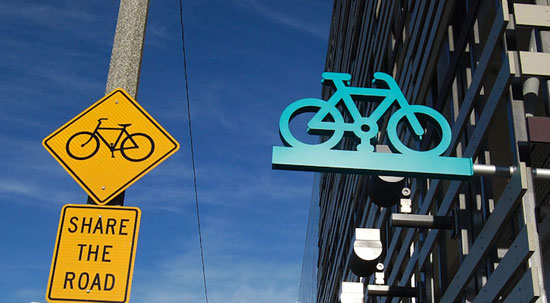
Santa Monica's new Bike Center is a sign of the times, offering new resources to folks who cycle to work or play.
Portland may get all the bicycle buzz, but Southern California cyclists can lay claim to some bragging rights, too, as Santa Monica on Friday opens what’s billed as the largest bike parking facility in the country.
The Santa Monica Bike Center will provide cyclists with secure bike storage, rentals, repairs and more. The ribbon cutting ceremony will take place Friday, November 18, at 10 a.m., and will be followed by open houses from 11 a.m. to 5 p.m. on Friday, Saturday and Sunday.
Up to 260 regular customers can reserve personal locking stations and showers for $15 monthly or $99 annually. Lockers and towels will be available at additional cost. (See the website for full membership details, including 24/7 access to the secure bike parking area.)
For all users and visitors, the center will provide other services like bike and Segway rentals, retail supplies, self-service air and repair station, and a “bike valet”—just drop off your wheels and they will be safely stored under supervision.
The center will also be used for special events, cycling classes and bike tours, all part of a plan to show people the upside of choosing transportation that is greener, healthier and, in many cases, just as fast as driving.
“InSanta Monica, a bike is really time-competitive with a car for most trips,” said Lucy Dyke, deputy director for special projects for the City ofSanta Monica. “Our streets are very congested.”
Josh Squire, CEO of Bike & Park, which operates the Santa Monica Bike Centerand others like it nationwide, said it is the highest-capacity bike parking facility in the country.
The bike center is located at Colorado and 2nd Street—next to the future site of the Expo Line’s westernmost station. The light rail line eventually will connect downtown L.A. to Santa Monica. Phase 1 is nearing completion, and an initial segment—from downtown to La Cienega/Jefferson—is expected to open early next year. (Check out this guided video sneak preview with Supervisor Zev Yaroslavsky.) Phase 2, which broke ground in September, will extend the line from Culver City to Santa Monica.
The Los Angeles County Metropolitan Transportation Authority partnered withSanta Monica in 2007 to create the $2 million dollar bicycle transit hub. Metro funded $1.5 million and Santa Monica pitched in the remaining $500,000.
Posted 11/16/11
Test driving Expo Line, 11/11
November 6, 2011
As the Exposition Light Rail Line rolls closer to becoming a reality, Supervisor and Metro Board Member Zev Yaroslavsky recently hopped aboard one of the test runs. Early next year, trains are expected to run from the 7th Street Metro Center downtown to La Cienega and Jefferson. Meanwhile, construction will continue on Phase 1′s westernmost station in Culver City. Eventually, Expo Phase 2 will extend to 4th Street and Colorado Avenue in Santa Monica. When it’s complete, the 15.2-mile line will be the first mass transit rail project on the Westside since the Red Cars.
Posted 11/06/11
Catching an early bird Expo Line ride
November 6, 2011

This is only a test—but not for long. As the Exposition Light Rail Line rolls closer to becoming a reality for Los Angeles transit customers, operators are now trying out the trains daily on portions of the new route. (Details on the test runs—from Flower and 23rd Street to La Cienega and Jefferson Boulevard—are here, along with safety tips.)
Supervisor and Metro Board Member Zev Yaroslavsky recently hopped aboard one of the test runs. The view from the train made it clear, he said, that getting from Point A to Point B will be only part of the Expo Line’s journey. As new routes connect with existing lines, entire regions of Los Angeles County are becoming accessible via public transit.
“Every one of these lines is another tipping point,” Yaroslavsky said.
All the test runs are a prelude to opening the first leg of the line early next year. Initially, trains are expected to run from the 7th Street Metro Center downtown to La Cienega and Jefferson. Meanwhile, construction is continuing on Phase 1’s westernmost station in Culver City.
This interactive map provides a preview of some of the cultural attractions, employment centers and educational institutions along Phase 1 of the route—including USC, the Natural History Museum, the California Science Center, the California African-American Museum and the Los Angeles Memorial Coliseum.
Eventually, Expo Phase 2 will extend all the way to 4th Street and Colorado Avenue in Santa Monica. Ground was broken on that phase a couple months ago. When complete, the 15.2-mile line will be the first mass transit rail project on the Westside since the Red Cars.
Posted 11/6/11
Expo means jobs
September 13, 2011
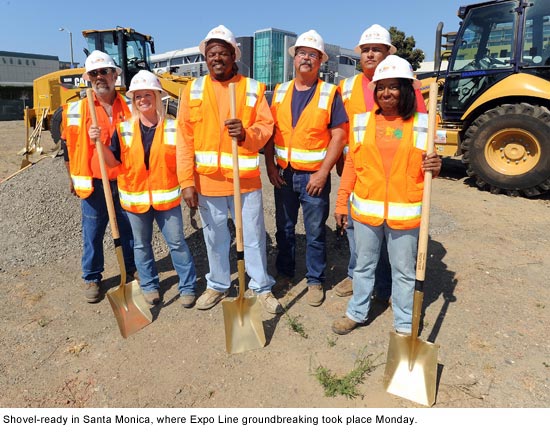
It took more than half a century, but this week marked the beginning of a new era as we broke ground on the first mass transit rail project to hit the Westside of Los Angeles since the Red Cars.
The Expo light rail line, which will run from downtown L.A. to Santa Monica beginning in 2015, offers people traveling to and from this jobs-rich and traffic-choked part of our county a real alternative to sitting and stewing in the gridlock that’s become an unfortunate way of life on the Westside for decades. Tens of thousands of commuters, residents and tourists stand to benefit every day.
To get a sense of the full sweep of what the 15.2-mile Expo Line will deliver, check out this map of the route. In the coming months, trains will start running in the line’s first segment, and construction will begin on Expo Phase 2, which will go from Culver City to 4th Street and Colorado Avenue in Santa Monica.
When completed, we expect the Expo Line to be one of the busiest light rail lines in the country. And its downtown connections to Metro’s existing and future lines promise to magnify its significance across the region.
The good news doesn’t stop there; all of us will be breathing easier as a result of the car trips that this new light rail light line will help eliminate.
But the most immediate upside is this: Expo Phase 2, largely funded by the Measure R ½-cent sales tax overwhelmingly approved by county voters for transportation improvements, can start putting people back to work again.
New jobs, more than 9,000 of them, are being created. And those jobs have coattails, creating ancillary jobs and paychecks that in turn pump new life into struggling local businesses and services.
As job creation rightly assumes new urgency as Topic No. 1 in the national political dialogue, we’ve got news for our leaders in Washington and Sacramento: The solution to fixing our national economy can start right here in Los Angeles County.
The American Jobs Act, released by President Obama this week, includes nearly $3.4 billion for California transit and modernization projects, which the White House says could translate to at least 51,500 jobs here. But we can do more.
We have the projects—not just Expo Phase 2, on which we broke ground Monday, but the much-needed Westside Subway extension and others—that together can put 166,000 people back to work. Los Angeles Mayor Antonio Villaraigosa’s plan to tap future Measure R funds to jumpstart these local transit projects offers a clear way to get our economy moving in the right direction.
And that’s a train that officials at every level of government need to jump aboard now.
Posted 9/13/11
Talking transit with Streetsblog
July 28, 2011
 From “people powered transportation” to the Westside subway, I tackled a wide-ranging series of questions this week from readers of Streetsblog Los Angeles on our region’s pressing transit challenges—past, present and future.
From “people powered transportation” to the Westside subway, I tackled a wide-ranging series of questions this week from readers of Streetsblog Los Angeles on our region’s pressing transit challenges—past, present and future.
Among many other things, I called for a break with “dated, auto-centric models” in favor of bicycling, walking and public transportation. I explained why I believe it is imperative that we finally bring mass transit to the Westside in the form of projects such as the Exposition Light Rail and the Westside Subway Extension. And I offered my views on the tensions that have erupted between Beverly Hills and Metro on the subway’s route, stressing that decisions will be based on evidence and science, not emotion.
Looking farther down the road, I talked about the possibility of someday building a 405 rail corridor between West Los Angeles and the San Fernando Valley and extending the Red Line subway through West Hollywood.
For the full text of my two-part Q & A with Streetsblog, you can click here for the first segment on regional transit needs and here for the second one on cycling and pedestrian issues. Feel free to let me know what you think at [email protected]
Posted 7/28/11
Bikes make tracks on Metro trains
April 13, 2011
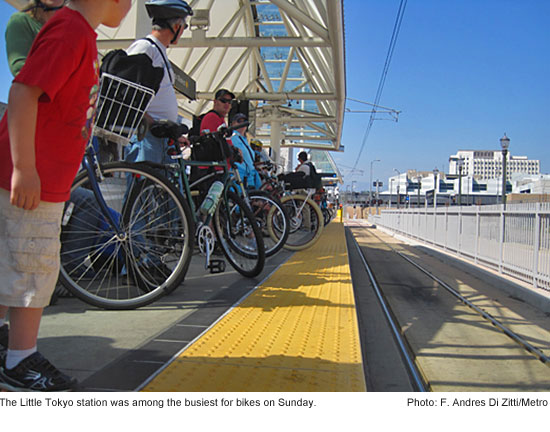 When Metro volunteers checked out the bike-toting crowds on downtown transit platforms Sunday morning, a thought straight out of “Jaws” leapt out at them:
When Metro volunteers checked out the bike-toting crowds on downtown transit platforms Sunday morning, a thought straight out of “Jaws” leapt out at them:
We’re gonna need a bigger train.
Sunday’s CicLAvia ride through Los Angeles streets was not just a test of the city’s ability to embrace a car-free existence for a few hours. It also was a test of Metro’s ability to cope with the largest congregation of bicycle commuters it’s ever faced, as thousands turned to public transportation to get them to and from the 7.5 mile route.
And—while it’s certain that many riders encountered delays, crowded train cars or both—it’s clear that the event was a milestone in the agency’s evolving track record of accommodating bicycles aboard its subway and light rail trains.
“I think it was a great opportunity to show that bikes and commuters and trains can all coexist,” said Andres Di Zitti, a Metro transportation planner who took part in the event as a volunteer and photographed some of the action. “This year, there were many more people and we were able to respond quickly…As we got to downtown, and saw the big turnout and the platforms starting to fill up, we called the operations managers and they sent longer trains out. It was definitely a good learning experience for us.”
Bruce Shelburne, a director in Metro operations, was on the receiving end of many of those phone calls. His staff was able to respond by quickly adding extra cars to trains on the Red, Purple and Gold lines—doubling capacity in some cases. They also had a couple of standby trains available, and those were pressed into service as well.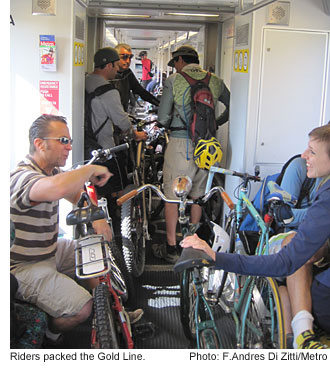
“We handled a pretty stressful day,” Shelburne said. “There’s no transit agency in the world that could have processed the amount of bikes that we had out there, period. I haven’t heard any complaints yet. I’m sure we’ll get some. But overall, it was a positive experience.”
Joe Linton, a longtime bike activist and one of CicLAvia’s organizers, said Metro did a good job of making more room for cyclists on its trains during the event. “I heard that some trains were very crowded—which is a good problem to have,” Linton said.
Sunday’s CicLAvia was the city’s second, and two more are in the works, tentatively scheduled for July 10 and October 9. Both will follow the same basic route, although a “spur” to the USC/Exposition Park area may be added, along with a Chinatown segment.
At the same time, Metro is considering plans to open up its trains for more bike commuters every day—not just CicLAvia Sundays.
Bikes currently are banned from Metro trains during peak commuting hours. That could change under a proposal set to go before Metro’s Operations Committee on April 21. The committee also will consider whether to spend $950,000 to remove some seats from light rail cars to make more room for bicycles. Seats already have been removed from Metro subway cars, Shelburne said.
Carving out more room for bikes and other items onboard the trains is a testament to changing commuting habits. “Back in 1990, the biggest thing we ever saw on a train was a briefcase,” Shelburne said. “Now everybody takes their life’s belongings with them.”
Accommodating cyclists by allowing them to ride the trains anytime could carry more than just symbolic value, according to a staff report urging reversal of the peak-hour ban.
“Elimination of time restrictions would allow unfettered access to the rail system,” the report said. “This would encourage more people to ride transit knowing that they would be allowed to begin and end their trips using bicycles; reduce their carbon footprints as more cars come off the road and increase MTA ridership leading to a more sustainable environment.”
Although CicLAvia was a special event, it offered insights into how bikes and trains can coexist better day in and day out, Shelburne said.
“Every time we do this event, we find some things that were done wrong,” Shelburne said. A biggie: “Passengers need to understand they cannot block doors on the trains. We have to probably provide a little more education.”




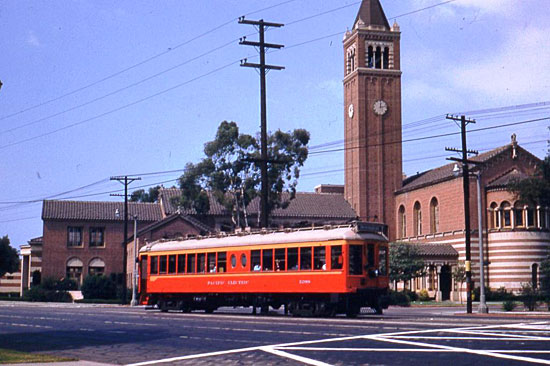
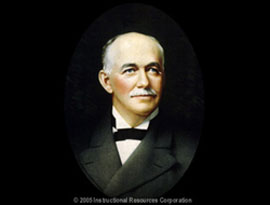










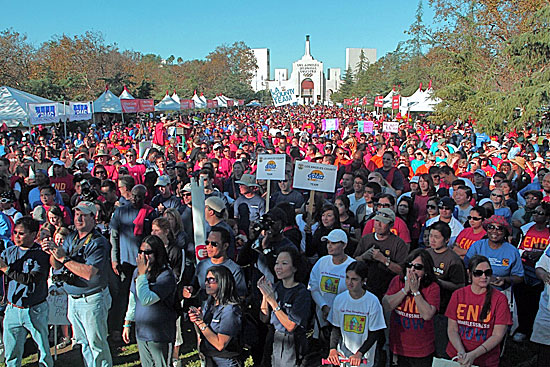
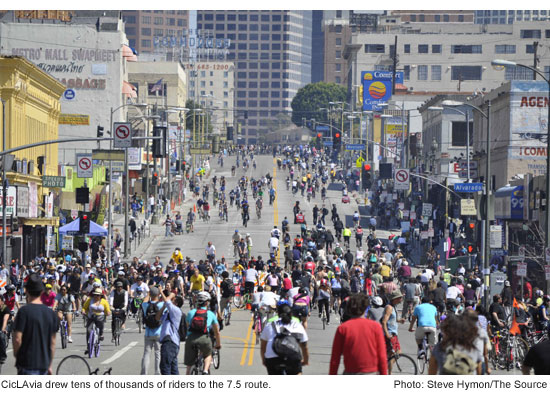







 405 bridge work causes a stink
405 bridge work causes a stink

